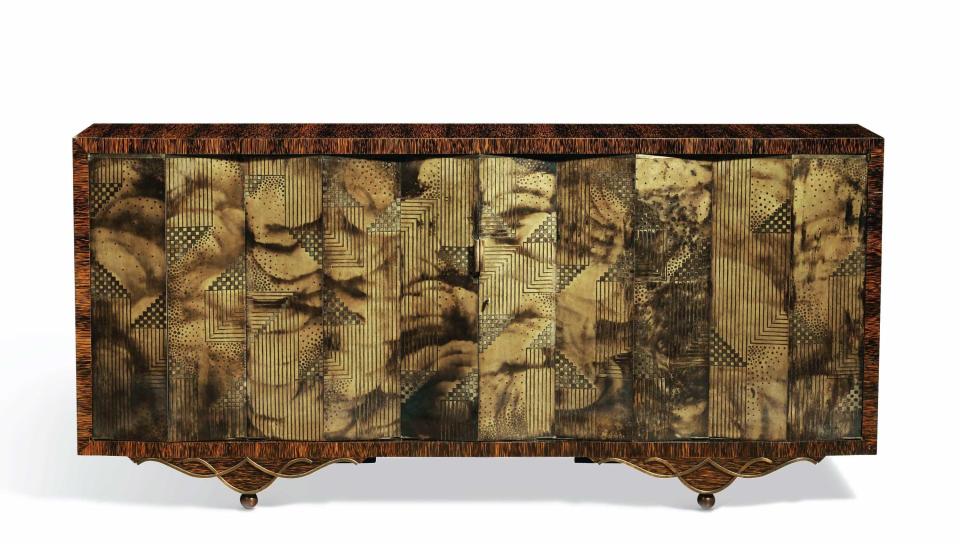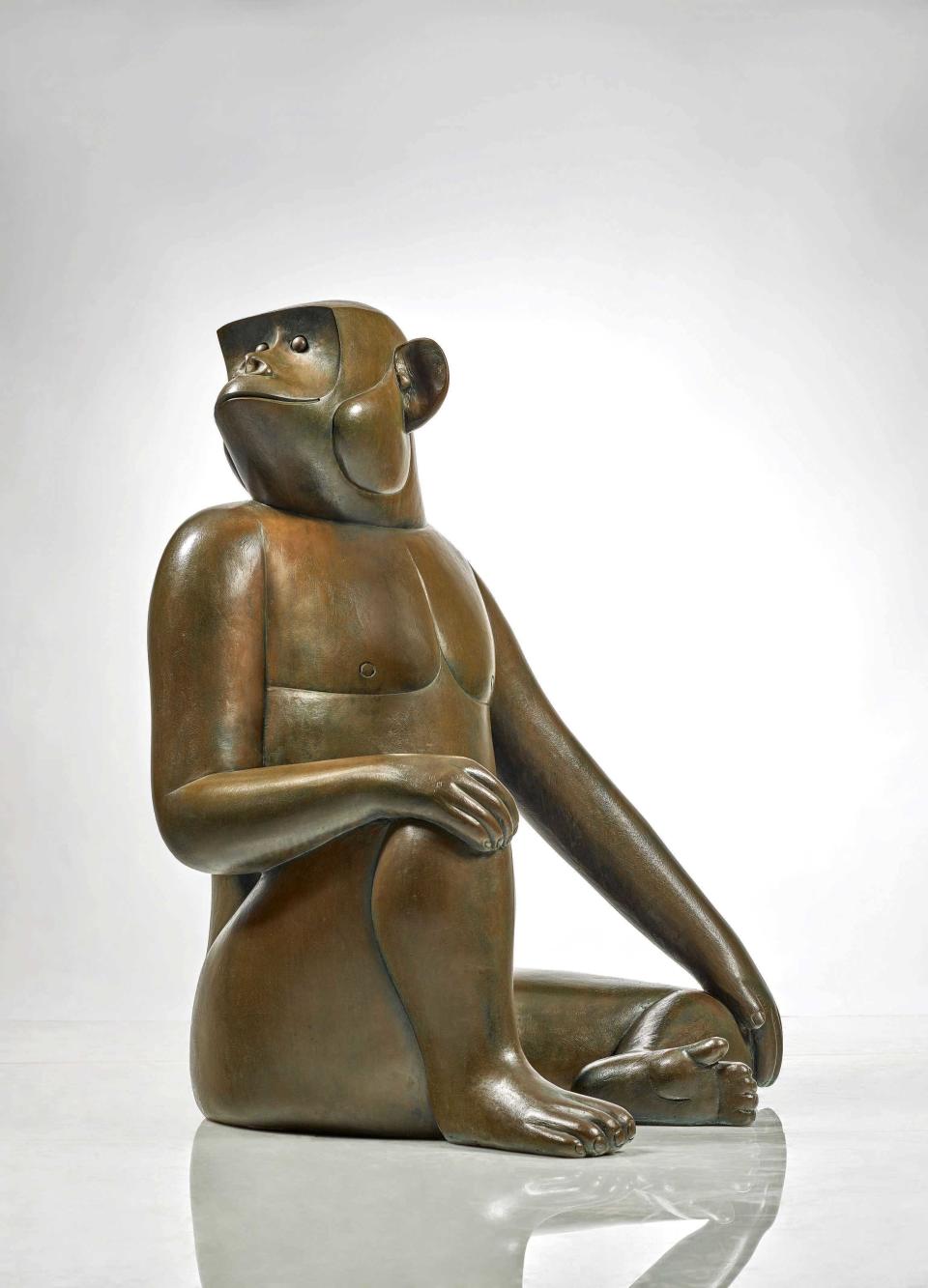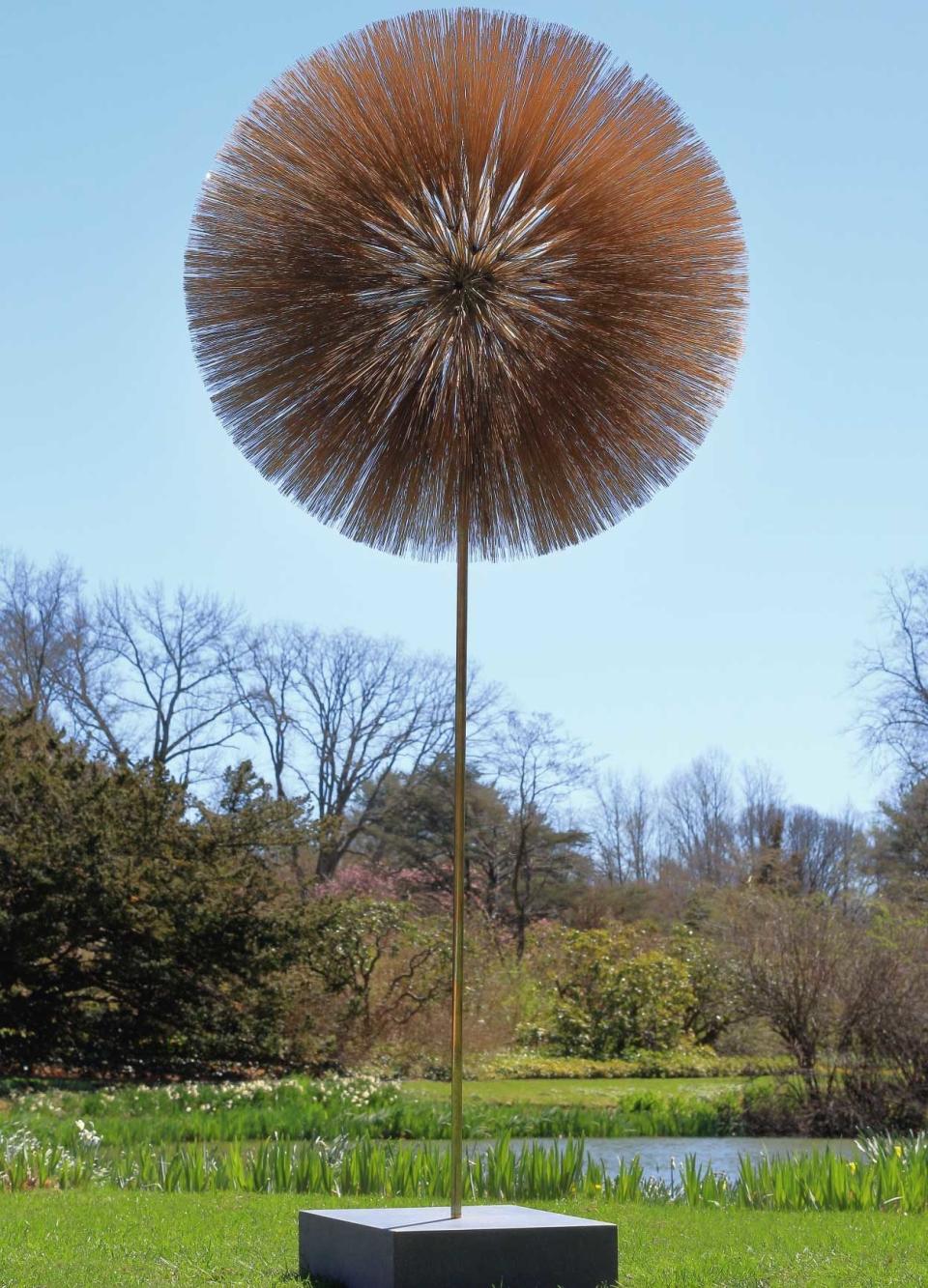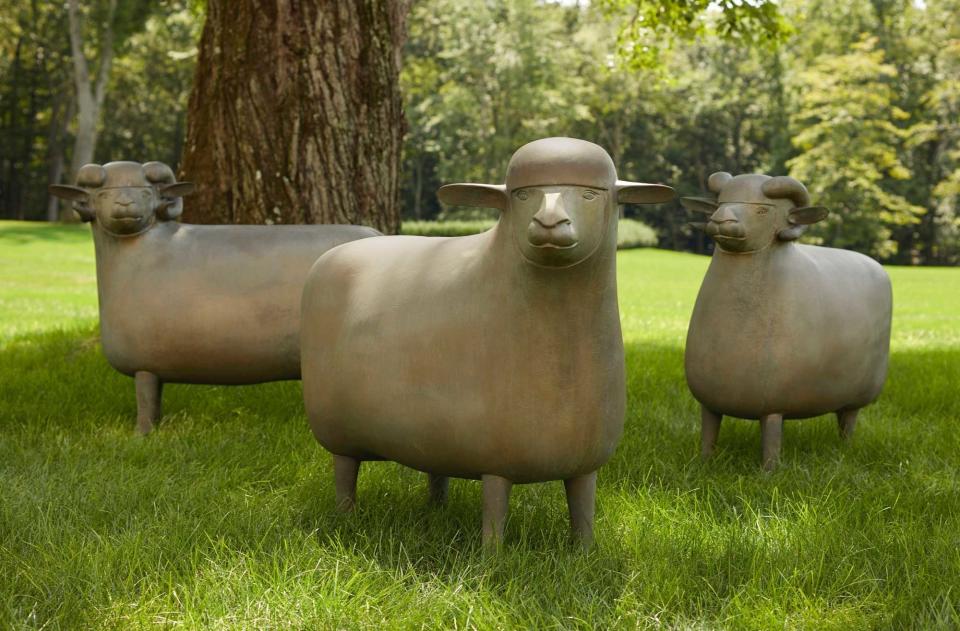Collectible Design Is Smashing Auction Records. Should Your Client Get Into the Fray?
What makes three bronze sheep sculptures by Francois-Xavier Lalanne worth $2.4 million? Or an Art Deco cabinet designed by Eugène Printz and Jean Dunand sell for $5.5 million? After those eye-opening results at Sotheby’s and Christie’s sales—both of which broke auction house records in the last month—such questions loom large over every pricey purchase or record-setting auction lot. For designers, how best to advise clients looking to get into the collectible design game is an especially tricky issue.
Like any artworks, design objects can command high prices for several reasons apart from aesthetic appeal. Part of that is driven by prevailing tastes. With a few exceptions (like the Printz and Dunand cabinet and a few Art Deco pieces), the designs that are now drawing most interest—and dollars—were created in the last few decades. Take Claude Lalanne’s Singe Avisé (Grand), a monumental bronze monkey statue created in 2005, which fetched $2.2 million—far exceeding its $1.5 million estimate.
Name and reputation of the artist, provenance, condition, and uniqueness or scarcity can also fuel value, as will acquisition by a celebrity, appearance in a museum exhibition, publication of a book, good publicity, and, of course, the death of the maker. Except for the last, these may reflect marketing activities by a savvy agent or dealer. James Zemaitis of R & Company notes, for example, "The Lalanne atelier—perhaps unintentionally—turbocharged their market by spacing out the timing of editions for their most famous works.” When it comes to auctions, a high price can simply be a matter of enthusiastic bidders unwilling to give ground—as in the case of the Printz and Dunand cabinet, which earlier this month sold for more than 10 times its initial estimate during a telephone bidding war between three collectors.

CollectibleDesignAuction-4-cropped.jpg
The question when considering a purchase is not only whether it’s worth the money, but whether the buyer is willing to pay the price. Asked about those prices, Sotheby’s head of 20th-century design, Jodi Pollak, says, “Design is still undervalued relative to the fine arts market, but it depends on what [genre of art] you’re comparing it to.” She cites greater demand as the reason collectible modern design is generally costlier than traditional styles. It’s also far more expensive than even the finest decorator showroom goods. The cost of materials, labor, and such can be amortized over time for pieces made in large quantities; for unique works or limited-edition pieces, they cannot, so the markups must necessarily be higher.
Buying collectible design may involve making investment choices as well as aesthetic ones. There’s a world of difference between a one-time buy and a collection, and an even more critical gap between a collection that is for pleasure and one for investment. The latter can be as unpredictable as the stock market, and is a high-risk venture without careful research or, often, professional help. A designer who doesn’t know the collectible design market would be wise to work with a reliable dealer or a knowledgeable auction house specialist.

CollectibleDesignAuction-6.jpg

CollectibleDesignAuction-5.jpg
AD100 interior designer Amy Lau leans on her arts background (she received her master’s in fine and decorative arts from Sotheby’s Institute of Art) when serving as consultant and curator for her clients, advising on purchases and helping them build collections. “Educating clients is one of the most important things I do,” she says, “guiding them toward pieces that could become long-term investments.”
Some other advice for interior designers looking to bring collectible design into their projects? First, know your client’s priorities: Are they looking for furniture to live with, to collect, or for investment? Next, if they’re shopping at auction, don’t let them (or you, for that matter) go alone! It’s easy to get carried away in the excitement of bidding. Be aware that at auctions, in galleries, or at design exhibitions (where prices tend to be higher), cost reflects market conditions more than intrinsic value—which, after all, is often mostly a matter of opinion. Ideally, collectible design should be something rare: a one-of-a-kind piece, a limited edition, or perhaps a production item that’s no longer being made. Though all of these elements may be present for an object by any artist, name recognition, these days, is usually the primary factor in exploding prices; think of the Jeff Koons rabbit sculpture that sold for $91 million last month.
When you're considering a purchase, first do your research: Find out what comparable pieces or works by the same designer have sold for recently. Check the condition—if you can’t see it in person, be sure to get an accurate report, so you know if costly repair or refinishing is needed. Then decide what you think is a fair price or what you’re willing to pay, and stick to it.

CollectibleDesign7.jpg
There are some designs you can usually count on to hold their value: Nakashima furniture, for example, is a relatively sure thing, even though thousands of pieces were made. The market may fluctuate, but Rago Auctions owner David Rago, who has dealt with Nakashima for several decades, says, “It always comes back.” Tiffany lamps, too, are steady sellers; at the most recent Sotheby’s design sale, several fixtures more than double or tripled their initial estimates. Rago laughs, “Who can’t use a really good lamp?”
For bargains, or at least good buys, look for work by designers who have been overshadowed by marquee names (for example, overlooked midcentury talent Paul McCobb); or a period that the market hasn’t yet gotten to, or one—like midcentury—for which the fever has cooled.
That said, what do you do when your client falls in love with an expensive object? The experts agree that all the best advice is useless when it comes to feelings—passion beats pragmatism every time. If they really want it, and can afford it, tell them to go ahead and buy it.
They won’t regret it; nor, as supportive adviser, will you.
Originally Appeared on Architectural Digest

